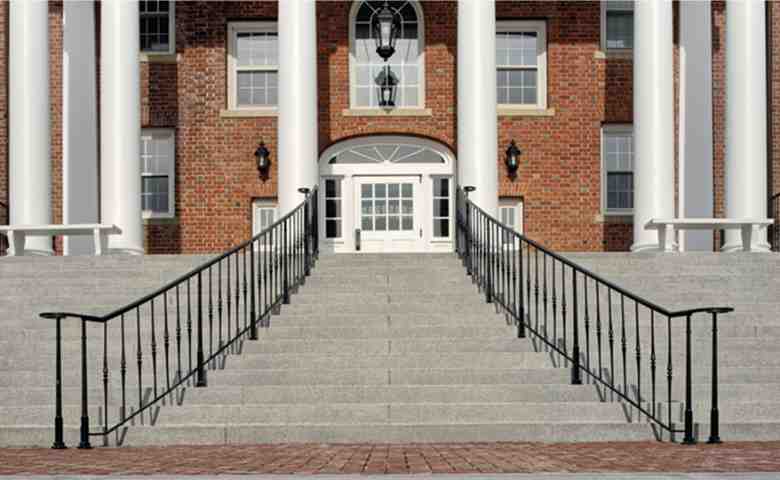Last Updated on August 21, 2025 by Admin
Railing systems are more than just functional safety features; they are design elements that shape the aesthetic and structural integrity of a space. Whether used in residential homes, commercial spaces, or public infrastructure, railings serve as both protective barriers and architectural statements. One of the most critical decisions when planning a railing system is the choice of material. Different metals offer unique qualities in terms of strength, durability, maintenance, and visual appeal. Selecting the right metal ensures that a railing system not only performs its safety function but also complements the overall design vision.
In this article, we’ll explore the most commonly used metals for railing systems and discuss how their material properties influence both performance and design.
Table of Contents
Stainless Steel: Strength and Modern Elegance
Stainless steel is one of the most popular materials for railing systems and for good reason. It offers a sleek, modern look that fits seamlessly into contemporary architectural styles. More importantly, stainless steel is highly durable and resistant to corrosion, making it ideal for both indoor and outdoor applications.
Advantages:
- Excellent corrosion resistance, especially when exposed to moisture.
- Minimal maintenance requirements.
- Can be polished for a high-shine finish or brushed for a matte, modern aesthetic.
- Suitable for residential, commercial, and industrial settings.
Design Use: Stainless steel is often chosen for minimalist, modern, or industrial-inspired spaces. Its clean lines and reflective qualities make it a favorite in luxury homes, office spaces, and public buildings.
Aluminum: Lightweight Versatility
Aluminum is another widely used metal in railing systems, known for its lightweight nature and cost-effectiveness. It is naturally resistant to rust and corrosion, which makes it especially suitable for coastal environments where salt exposure is a concern.
Advantages:
- Lightweight yet strong.
- Corrosion-resistant without the need for heavy coatings.
- Can be powder-coated in a wide variety of colors for design flexibility.
- More affordable than stainless steel or brass.
Design Use: Aluminum railings are perfect for outdoor decks, balconies, and poolside areas. Because of the wide range of available finishes, they offer architects and homeowners creative freedom while keeping costs in check.
Wrought Iron: Timeless Tradition
For centuries, wrought iron has been associated with strength and timeless elegance. Though not as corrosion-resistant as stainless steel or aluminum, it is valued for its ability to be forged into intricate shapes and patterns. This makes wrought iron railings a staple in classic and traditional architectural designs, where each traditional railing component adds detail and authenticity.
Advantages:
- Exceptional strength and durability.
- Can be customized with ornate, decorative patterns.
- Adds historic charm and traditional appeal.
Design Use: Wrought iron is commonly used in historic homes, estates, and public landmarks. Its ornate craftsmanship makes it ideal for staircases, balconies, and garden fences where decorative detail is desired.
Brass and Bronze: Decorative Luxury
Brass and bronze are metals that stand out for their distinctive color tones brass with its warm golden hues and bronze with its deep, earthy finish. While not as common as steel or aluminum for large-scale railing systems, they are often used for decorative accents and in luxury design projects.
Advantages:
- Unique and luxurious appearance.
- Naturally resistant to corrosion, especially bronze.
- Adds an element of sophistication and elegance.
Design Use: Brass and bronze are typically found in high-end interiors, hotels, or heritage properties. They work well when combined with other materials such as glass or wood, creating a refined, bespoke look.
Galvanized Steel: Affordable Durability
Galvanized steel offers the strength of steel with the added benefit of zinc coating, which improves its resistance to rust and corrosion. It is often chosen for industrial or budget-conscious projects where performance and longevity are critical but aesthetics are secondary.
Advantages:
- Strong and durable.
- Cost-effective compared to stainless steel.
- Suitable for outdoor applications.
Design Use: Galvanized steel is commonly seen in utility railings, public infrastructure, and industrial facilities where functionality and safety outweigh decorative needs.
Balancing Durability with Design
Choosing the right metal for a railing system is about finding the balance between durability, cost, and design. Here are a few key considerations to guide the decision:
- Environment: Will the railing be exposed to moisture, salt air, or industrial pollutants? Stainless steel or aluminum may be better suited for such environments.
- Maintenance: How much upkeep is realistic for the project? Some metals, like wrought iron, require regular painting or sealing, while stainless steel demands little maintenance.
- Design Vision: Does the space call for sleek modernity, ornate tradition, or luxurious detail? The metal you choose directly impacts the aesthetic outcome.
- Budget: Project costs vary widely depending on material selection. Aluminum offers affordability, while brass or bronze represent premium options.
Conclusion
Railing systems are both protective features and design statements. The choice of material is crucial in ensuring that they withstand environmental conditions, meet safety standards, and align with the intended architectural style. Stainless steel and aluminum offer modern, low-maintenance solutions, while wrought iron, brass, and bronze bring timeless or luxurious flair. Galvanized steel, meanwhile, provides strength and economy.
Ultimately, material matters. By carefully considering durability, maintenance, and design, architects, builders, and homeowners can ensure that railing systems serve their purpose beautifully for years to come.
Related Posts:
- Careers in Painting and Decorating within Construction: A Global Perspective
- Low Maintenance, High Performance: Benefits of Sheets of Stainless Steel in Daily Use
- The Role of Handrail Design in Interior and Exterior Spaces
- The Ultimate Guide to Metal Buildings: Everything You Need to Know


